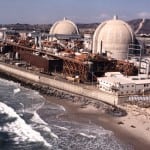In a move that could cost the state’s electricity generators an estimated $8.5 billion, New York regulators [have] issued a draft policy that would require the installment of closed-loop cooling systems at two dozen large power plants in the state, including oil, coal, nuclear and natural gas generators, to reduce fish kills and other harmful effects to wildlife in the water bodies that supply the plants’ cooling water.
Announced March 10, the Department of Environmental Conservation (DEC) proposal establishes closed-loop cooling systems as the “best technology available,” meaning it must be applied to large power plant and industrial facilities in the state under the federal Clean Water Act. Specifically, the proposal applies to existing and proposed generators that withdraw from lakes or rivers more than 20 million gallons of water daily, and which require a state pollution discharge permit.
The agency also identified 25 existing plants that could be affected by the policy, if it is finalized, and estimated the total cost of building, operating and maintaining the new cooling systems over 20 years at a whopping $8.5 billion. Some industry estimates put the cost far higher, and the regulators did not estimate how much the expenditures might raise power costs to consumers.
The list includes four plants owned by AES Corp., U.S. Power Gen’s 1,290-MW Astoria generating station on the East River, Mirant Corp.’s 1,138 MW Bowline natural gas and oil plant on the Hudson River, TransCanada Corp.’s 2,410 MW Ravenswood gas and oil plant on the East River, and Dynegy’s Corp.’s 1,200 MW gas and oil Roseton plant on the Hudson River. The new proposal would also apply to Entergy Corp.’s Indian Point and FitzPatrick nuclear plants, as well as Constellation’s Ginna and Nine Mile Point nuclear plants.
A DEC spokeswoman said one of the reactors at the Nine Mile nuclear plant has a closed-loop cooling tower, but that it may not be fully compliant with the new standard.
A spokesman for the Edison Electric Institute, which represents investor-owned electric utilities, declined to provide much comment on the new proposal, saying only that EEI “will be monitoring this on our members’ and industry’s behalf.”
In a presentation on February 10 to Wall Street analysts, EEI officials said they thought tighter environmental requirements nationwide might create “the need to install cooling towers on more than 40 percent of the industry’s existing power plants.”
The U.S. Environmental Protection Agency also has been developing rules on utility cooling systems, with the agency under the Bush administration weighing the costs and benefits of requiring closed-loop systems. The Supreme Court last April rejected a lawsuit by environmentalists challenging such cost-benefit analyses, with the court ruling that it was “reasonable” for EPA to consider cost in setting somewhat looser cooling system standards for existing plants than for new ones.
The New York proposal would let companies get a waiver if they show that a closed loop system could not physically be installed on a particular facility, but would nonetheless require them to install a cooling system that provides “essentially the same” protection for aquatic life.
The problem with existing “once-through” cooling systems used by many power plants is that fish and other aquatic life may be drawn into the system along with water and killed when they become trapped against intake screens. The DEC said that particular problem was probably the most significant at National Grid’s Northport natural gas- and oil-fired generating station on Long Island Sound, where it estimated about 8.4 billion fish are killed annually against the screens. National Grid had no immediate comment on that assertion.
In addition to fish kills, fish eggs, larvae and other small aquatic animals can be killed if they pass through the screens and enter the generator itself. Finally, aquatic ecosystems can suffer when cooling water—having been warmed after passing through the facility—is injected back into the original body of water, raising overall temperatures in the stream or lake.
Statewide, the DEC said New York’s generators use about 6 trillion gallons of cooling water annually, killing about 17 billion fish at all stages of life. Closed-loop systems, which re-circulate water rather than exchange it for fresh water, can reduce cooling water requirements by 93-98 percent, said the DEC.
The cooling system question is not new in New York, and in fact has a long history. In 1980, after 17 years of negotiation, Con Edison settled a lawsuit by agreeing to cancel a controversial hydro project and make other concessions in exchange for delaying a switchover to closed loop systems for its Indian Point nuclear plant, which has since been sold to Entergy.
While the Clean Water Act requires states to select the best technology available for cooling water, the DEC said it decided that closed-loop systems are needed because there is no other system that can consistently provide the same level of protection for aquatic life.
The DEC acknowledged that other cooling water technologies and methods “have been demonstrated to reduce entrainment and impingement to levels commensurate to that achievable using a closed-cycle cooling system.
“However, the effectiveness of these technologies, especially on reducing mortality, varies greatly depending on the facility location, the water body drawn from, fish species and life stages impinged and entrained, and the ability of the facility owner to maintain and operate the equipment effectively,” the DEC said.
“Therefore, it is not possible to select any one of these alternative technologies or suites of technologies to install and operate on all existing industrial facilities that will consistently, effectively and efficiently minimize the adverse environmental impacts caused by” the cooling water system.
By contrast, “The demonstrated technology that achieves the greatest reduction in non-contact cooling water use is closed-cycle cooling,” says the proposal.
The DEC says it is accepting comments on the proposal until May 9.
—Jeff Beattie (jbeattie@accessintel.com) is a reporter for COAL POWER’s sister publication, The Energy Daily, where this article originally appeared.








